U.S. STANDARDS and INTERNATIONAL STANDARDS
STANDARD: Provide requirements, specifications, guidelines or characteristics that can be used consistently. Major classifications of this term include • Material or substance whose properties are known with a level of accuracy that is sufficient to allow its use as a physical reference in calibrating or measuring the same properties of another material or substance. • Concept, norm, or priciple established by agreement, authority, or custom, and used generally as an example or model to compare or measure the qulity or performance of a practice or procedure. • Written definition, limit, or rule aaproved and monitored for compliance by an authoritative agency or professional or recognized body as a minimum acceptable benchmark.
ABMA (AFBMA): American Bearing Manufacturers Association / Anti-Friction Bearing Manufacturers Association is an industry trade group that deals with all aspects of bearing technology. U.S Bearing Brand Protection Handbook/Standards.
AC 00-56B (U.S Department of Transportation/Federal Aviation Administration): Voluntary Industry Distributor Accreditation Program describes a system for accrediting civil aircraft parts distributors based on voluntary industry oversight. The advisory circular (AC) also provides information for developing accreditation programs.
AGMA: American Gear Manufacturers Association is a voluntary association of companies, consultants, and academicians with a direct interest in the design, manufacture, and application of gears, couplings and related power transmission components and equipment.
AIA: Aerospace Industries Association founded in 1919, only a few years after the birth of flight, is the most authoritative and influential trade association representing the U.S. aerospace and defense industry on Capitol Hill, within the administration and internationally. As the voice of American aerospace and defense, AIA’s strong advocacy is essential to protecting the interests of our nation and our industry. Today, more than 340 major aerospace and defense companies and their suppliers are members of the association, embodying every high-technology manufacturing segment of the U.S. aerospace and defense industry including commercial aviation and avionics, manned and unmanned defense systems, and space technologies and satellite communications.
SPONSORED CONTENT
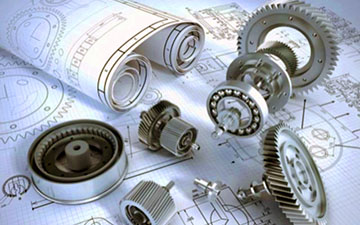
Your Service Flyer
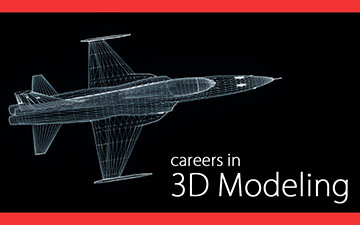
Your Event Invitation
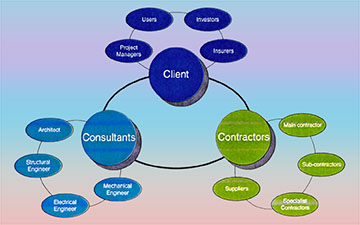
Your Promotion Ads
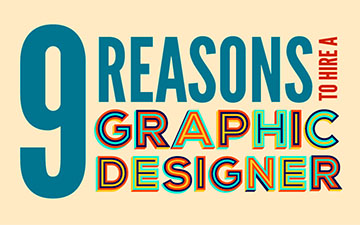
Your Logo & Brand
Support us and grow your business with us. My goal was to make technical information available with ready access to commonly needed resources, formulas, and reference materials while performing my work as a Technical Support Engineer. The businesses listed in Sponsored Content were carefully selected because of their uniqueness. However, non-sponsored selected ads will be rotated monthly.
ViBa Direct lacks an advisory board to do research and hire writers with the latest technical knowledge. Creating an effective advisory board requires more than an invitation. Without your sponsorship, this is not possible. If your company is interested in placing the company’s logo, brand, event invitation, and other promotional banners and flyers here or on any other pages, please reach out to Customer Service for more detail.
ANSI: American National Standard Institute is a private non-profit organization that oversees the development of voluntary consensus standards for products, services, processes, systems, and personnel in the United States. There are approximately 9,500 American National Standards that carry the ANSI designation. Are ANSI standards mandatory? OSHA laws and government standards are always mandatory; ANSI Standards are generally voluntary.
ANVISA: The Brazilian Health Regulatory Agency is an autarchy linked to the Ministry of Health, part of the Brazilian National Health System (SUS) as the coordinator of the Brazilian Health Regulatory System (SNVS), present throughout the national territory. Anvisa’s role is to promote the protection of the population’s health by executing sanitary control of the production, marketing and use of products and services subject to health regulation, including related environments, processes, ingredients and technologies, as well as the control in ports, airports and borders.
AS 9100 is the international Quality Management Systems standard for the Aviation, Space and Defense (AS&D) industry, created by the IAQG, and AS9100 Rev D (2016). “AS9100 Certified” means an organization has met the requirements of AS9100D. IAQG has provided clarification to AS9100D. The AS9100D standard applies to any organization that works in the aerospace industry or with partners in the aerospace industry, including:
- Designers of aerospace parts and assemblies
- Manufacturers of aircraft components and materials
- Quality management organizations working with aerospace manufacturers
- Other companies working in the aerospace industry regularly or irregularly
AS 9120 is a Quality Management Systems standard designed for the Aviation, Space and Defense (AS&D) distributors. The most recent version of the AS9120 standard is called AS9120B, was released in December, 2016. Most of AS9120B is made up of ISO 9001:2015 requirements. The standard includes additional requirements specific to aerospace distribution, such as configuration management, product and service conformity, on-time delivery, counterfeit parts, work transfers,and human factors.
ASME: The American Society of Mechanical Engineers is a professional association that promotes the art, science & practice of multidisciplinary engineering & allied science around the globe. Featured topic includes Bioengineering | Design & Manufacturing | Power & Energy | Standard & Certification | Technology & Society | Journals.
ASM International is a Society of professionals who have come together to accomplish great works for the common good which cannot be achieved independently. The maximum value ASM can bring to its members and society can be achieved by working at the intersection of Design, Structural Engineering, Manufacturing, Quality and Materials. The shared values of transparency, integrity, technical excellence, diversity, and constancy of purpose are the great enablers.
ASSIST-QuickSearch: Department of Defense, DLA Document Services. MIL-STD-810, FED-STD-595, basic search.
ASTM: American Society for Testing and Materials is a globally recognized leader in the development and delivery of voluntary consensus standards. ASTM International standards are the tools of customer satisfaction and competiveness for companies across a wide range of markets. ASTM standards are passports to a successful global trading strategy.
AWS: American Welding Society is a nonprofit organization with a global mission to advance the science, technology and application of welding and allied joining and cutting processes, including brazing, soldering and thermal spraying. AWS offers a number of certification programs that recognize and document expertise and knowledge in specific welding-related disciplines including, inspectors, supervisors, educators, radiographic interpreters, welding engineers and fabricators.
ECHA: The European Chemicals Agency, an agency of the EU. ECHA implement the EU’s chemicals legislation to protect public health and the environment. ECHA work also contributes to a well-functioning internal market, innovation and the competitiveness of Europe’s chemicals industry. See REACH for more information on the properties and hazards of substances.
EIA: The Electronic Industries Alliance (EIA) standards direct component marking, data modeling, color coding and packaging materials. Products and services covered under this collection range from the smallest electronic component to the most complex systems used by the defense, space and consumer product industry. Lists of EIA Test Methods
EMA: The European Medicines Agency is a decentralised agency of the European Union (EU) responsible for the scientific evaluation, supervision and safety. Prior to 2004, it was known as the European Agency for the Evaluation of Medicinal Products or European Medicines Evaluation Agency (EMEA). The EMA operates as a decentralised scientific agency of the European Union and its main responsibility is the protection and promotion of public and animal health, through the evaluation and supervision of medicines for human and veterinary use.
EPA: United States Environmental Protection Agency. The mission of EPA is to protect human health and the environment. EPA works to ensure that Americans have clean air, land and water. EPA issues guidance documents to further clarify and assist in implementation of regulations. EPA helps regulated entities meet federal requirements, and holds entities legally accountable for violations.
EVERYSPEC: EverySpec.com provides free access to over 55,000 Military, DoD, Federal, NASA, DOE, and Government specifications, standards, handbooks, and publications. This data warehouse includes standardization documents with the designations of MIL, MIL-STD, MIL-PRF, MIL-DTL, FED, CID, JANS, MS, AND, USAF, DID, CID, UCF, and FIPS, including their Amendments, Notices, and Supplements.
FDA: The United States Food and Drug Administration is a federal agency of the Department of Health and Human Services. The FDA is responsible for protecting the public health by ensuring the safety, efficacy, and security of human and veterinary drugs, biological products, tobacco products, dietary supplements, prescription and over-the-counter pharmaceutical drugs (medications), vaccines, biopharmaceuticals, blood transfusions, medical devices, electromagnetic radiation emitting devices (ERED), cosmetics, animal foods and veterinary products.
HPRA: The Health Products Regulatory Authority is an independent goverment agency regulates medicines and devices for the benefit of people and animals. HPRA remit and regulatory functions include human and veterinary medicines, clinical trials, medical devices, controlled drugs, blood and blood components, tissues and cells, and cosmetic products.
IATF: International Automotive Task Force is a group of automotive manufacturers which aims at providing improved quality products to automotive customers worldwide. The difference between ISO 9001 and IATF is the ISO 9001 defines the fundamental requirements of a quality management system for every organization, while IATF 16949 talks about the requirements of QMS for automotive organizations. The ISO 9001 focuses on customer satisfaction, while the IATF 16949 focuses on customer-specific requirements.
IEEE: The Institute of Electrical and Electronics Engineers is the world's premier organization that serves technical professionals and students who are looking to both foster working relationships and gain access to the latest technical research and knowlege with rich offerings in publications, standards, certifications, and more.
NỘI DUNG TÀI TRỢ
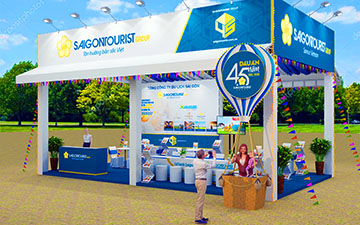
Quảng Cáo Dịch Vụ
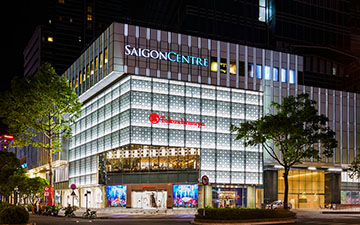
Quảng Cáo Sự Kiện
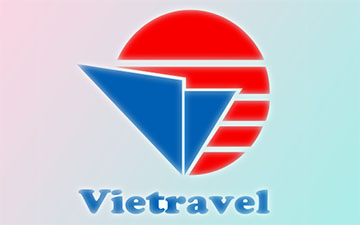
Quảng Cáo Khuyến Mãi

Biểu Trưng & Nhãn hiệu
Hỗ trợ chúng tôi và phát triển doanh nghiệp của bạn với chúng tôi. Mục tiêu của tôi là cung cấp thông tin kỹ thuật với khả năng truy cập sẵn sàng vào các tài nguyên, công thức và tài liệu tham khảo thường cần thiết trong khi thực hiện công việc của mình với tư cách là Kỹ sư hỗ trợ kỹ thuật. Các doanh nghiệp được liệt kê trong Nội dung được Tài trợ đã được lựa chọn cẩn thận vì tính độc đáo của chúng. Tuy nhiên, các quảng cáo liệt kê không được tài trợ sẽ được luân chuyển thay đổi hàng tháng.
ViBa Direct thiếu một ban cố vấn để thực hiện nghiên cứu và thuê các nhà văn với kiến thức kỹ thuật hiện đại. Việc tạo ra một ban cố vấn hiệu quả đòi hỏi nhiều hơn là một lời mời. Nếu không có sự tài trợ của bạn, điều này khó có thể thực hiện. Nếu công ty của bạn có nhu cầu quảng cáo, đặt biểu trưng, thương hiệu, biểu ngữ mời tham gia thảnh viên, hội viên cũng như các bích chương quảng cáo ở đây hoặc trên bất kỳ trang nào khác, xin vui lòng liên hệ với nhóm Dịch Vụ Khách Hàng Dịch Vụ Khách Hàng để biết thêm chi tiết.
ISO: International Organization for Standardization / Organisation Internationale de Normalisation. ISO is an independent, non-governmental international organization with a membership of 162 national standards bodies. nternational Standards make things work. They give world-class specifications for products, services and systems, to ensure quality, safety and efficiency. They are instrumental in facilitating international trade.
ISO 13485: Recognized by regulators around the world as a good basis for addressing medical device design and manufacturing regulatory requirements. It allows us to enhance product safety by proactively identifying and managing product and project risks. This International Standard specifies requirements for a quality management system that can be used by an organization for the design and development, production, installation and servicing of medical devices, and the design, development, and provision of related services.
- ISO 13485 compliance helps ensure that companies will meet the FDA's requirements for 21 CFR Part 820 for quality system regulations.
- ISO 13485 helps companies maintain efficient and holistic quality management processes and reflects a strong commitment to continuous improvement.
- Compliance with ISO 13485 is often seen as the first step in complying with European regulatory standards.
ISO 14001 is a family of standards related to environmental management that exists to help organizations minimize how their operations negatively affect the environment; comply with applicable laws, regulations, and other environmentally oriented requirements. The primary objective of the ISO 14000 series of standards is to promote effective environmental management systems in organizations. The standards seek to provide cost-effective tools that make use of best practices for organizing and applying information about environmental management.
ISO 14971 is a Medical devices - Application of risk management to medical devices. This document was developed specifically for manufacturers of medical devices on the basis of established principles of risk management that have evolved over many years. This document could be used as guidance in developing and maintaining a risk management process for other products that are not necessarily medical devices in some jurisdictions and for suppliers and other parties involved in the medical device life cycle.
ISO 9000 is a quality management standard that presents guidelines intended to increase business efficiency and customer satisfaction. The goal of ISO 9000 is to embed a quality management system within an organization, increasing productivity, reducing unnecessary costs, and ensuring quality of processes and products. The difference between ISO 9000 and ISO 9001 is summarized as the definition of quality management system (ISO 9000) and requirements needed to meet that definition (ISO 9001). To become ISO 9000 certified, the business/organization should really be focused on ISO 9001. However, an organization can be ISO 9001 certified or compliant. ISO 9000 is often used to refer to a family of three standards: ISO 9000:2005 - Fundamentals and vocabulary | ISO 9001:2015 - Requirements | ISO 9004:2000 - Guidelines for performance improvement.
ISO 9001 is an international standard dedicated to Quality Management Systems (QMS). It outlines a framework for improving quality and a vocabulary of understanding for any organization looking to provide products and services that consistently meet the requirements and expectations of customers and other relevant interested parties in the most efficient manner possible. The standard that ensures consistency of a product ordered by customers. ISO 9001:2015 was published in September 2015 and is already the most widely adopted standard in the history of standards. An ISO 9001 certification can enhance an organization’s credibility as it shows customers that the organization’s products and services meet quality expectations. In order to maintain the ISO 9001 certification, the organization must continue with regular surveillance and recertification audits.
ISO 9004 focuses on meeting the requirements of customers and all other interested parties to achieve sustained success. ISO 9001 focuses on Quality management – Quality of an organization – Guidance to achieve sustained success.
ISTA: International Safe Transist Association. ISTA is the author of test procedures that define how packages should perform to ensure protection of their contents. ISTA sets the standard for optimizing packages that are survivable, sustainable, and successful. ISTA has two types of tests: Performance Tests result in a Pass/Fail assessment and are used to determine the viability of a packaged-product to survive normal shipment. Development Tests compare relative performance of two or more designs or the same design from different suppliers. The ISTA 3A test was created in the year 2008 with the purpose of guaranteeing the safe transportation of individual packages weighting less than 70 kg (150 lb) sent to the end consumer via a parcel delivery system.
MIL-SPECS: Mil-spec grade materials are tough and function well in certain industry applications. Certifying a material to Mil-spec means the product maintains certain characteristics to meet physical strength, resistance to temperature, flammability and other environmental requirements. U.S Military Specifications or ANSI standard is unique to the military - or a particular branch of the military. Some Mil-Specs are free and others have to be purchased. To find out the specific Mil-Specs, visit the Acquisition Streamlining and Standardization Information System or ASSIST. This website have over 100,000 digital documents all around the various Mil-Specs.
NEMA: The National Electrical Manufacturers Association represents nearly 350 electrical equipment and medical imaging manufacturers at the forefront of electrical safety, reliability, and resilience, as well as efficiency and energy security. NEMA provides a forum for the development of technical standards that are in the best interests of the industry and users, advocacy of industry policies on legislative and regulatory matters, and collection, analysis, and dissemination of industry data.
NIST: The National Institute of Standards and Technology (NIST) was founded in 1901 and is now part of the U.S. Department of Commerce. From the smart electric power grid and electronic health records to atomic clocks, advanced nanomaterials, and computer chips, innumerable products and services rely in some way on technology, measurement, and standards provided by the National Institute of Standards and Technology.
NSF: The Public Health and Safety Organization help protect the world’s food, water, consumer products and environment. NSF mission is to protect and improve global human health. As an independent, accredited organization, our standards group facilitates the development of standards, and our service groups test and certify products and systems. We also provide auditing and risk management solutions for public health and the environment.
SPONSORED CONTENT

Your Service Flyer

Your Event Invitation

Your Promotion Ads

Your Logo & Brand
PMD Act: The Japan's Pharmaceuticals and Medical Devices Act affects all medical devices for sale in Japan as a foreign company including medical product registration, in-country representation, certification processes, licensing, and quality assurance systems.
OEHHA. The Office of Environmental Health Hazard Assessment is the lead state agency for the assessment of health risks posed by environmental contaminants. OEHHA’s mission is to protect and enhance the health of Californians and the state’s environment through scientific evaluations that inform, 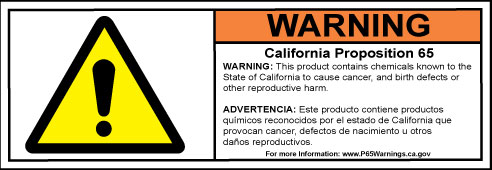 support and guide regulatory and other actions. OEHHA implements the Safe Drinking Water and Toxic Enforcement Act of 1986, commonly known as Proposition 65, and compiles the state’s list of substances that cause cancer or reproductive harm. Proposition 65 requires businesses to provide warnings to Californians about significant exposures to chemicals that cause cancer, birth defects or other reproductive harm. Proposition 65 also prohibits California businesses from knowingly discharging significant amounts of listed chemicals into sources of drinking water. Products that sold, distributed or transfered into California shall carry a clear and reasonable warning label. Each warning must be preceded with a warning symbol consisting of a black exclamation point in a yellow equilateral with a bold, black outline.
support and guide regulatory and other actions. OEHHA implements the Safe Drinking Water and Toxic Enforcement Act of 1986, commonly known as Proposition 65, and compiles the state’s list of substances that cause cancer or reproductive harm. Proposition 65 requires businesses to provide warnings to Californians about significant exposures to chemicals that cause cancer, birth defects or other reproductive harm. Proposition 65 also prohibits California businesses from knowingly discharging significant amounts of listed chemicals into sources of drinking water. Products that sold, distributed or transfered into California shall carry a clear and reasonable warning label. Each warning must be preceded with a warning symbol consisting of a black exclamation point in a yellow equilateral with a bold, black outline.
‹•› Proposition 65 protects the state's drinking water sources from being contaminated with chemicals known to cause cancer, birth defects or other reproductive harm, and requires businesses to inform Californians about exposures to such chemicals. The list contains a wide range of naturally occurring and synthetic chemicals that are known to cause cancer or birth defects or other reproductive harm. These chemicals include additives or ingredients in pesticides, common household products, food, drugs, dyes, or solvents. Listed chemicals may also be used in manufacturing and construction, or they may be byproducts of chemical processes, such as motor vehicle exhaust.
OSHA: The Occupational Safety and Health Administration is an agency of the United States Department of Labor. Congress established the agency under the Occupational Safety and Health Act, which President Richard M. Nixon signed into law on December 29, 1970 to ensure safe and healthful working conditions for working men and women by setting and enforcing standards and by providing training, outreach, education and assistance. The OSHA Act covers most private sector employers in all 50 states. OSHA had federal visitorial powers to inspect and examine workplaces and by law, employers must provide their workers with a workplace that does not have serious hazards and must follow all OSH Act safety and health standards. Employers must find and correct safety and health problems. The OSH Act further requires that employers must first try to eliminate or reduce hazards by making feasible changes in working conditions rather than relying on personal protective equipment such as masks, gloves, or earplugs. Switching to safer chemicals, enclosing processes to trap harmful fumes, or using ventilation systems to clean the air are examples of effective ways to eliminate or reduce risks.
REACH: Registration, Evaluation, Authorisation and Restriction of Chemicals is a European Union regulation dating from 18 December 2006. REACH addresses the production and use of chemical substances, and their potential impacts on both human health and the environment. REACH (EC 1907/2006) aims to improve the protection of human health and the environment through the better and earlier identification of the intrinsic properties of chemical substances. This is done by the four processes of REACH, namely the registration, evaluation, authorisation and restriction of chemicals. REACH also aims to enhance innovation and competitiveness of the EU chemicals industry.
RoHS (2002/95/EC): Restriction of Hazardous Substances Directive. RoHS has its roots in the European Union back in 2003. The goal of RoHS is to reduce the environmental effect and health impact of electronics. The legislation's primary purpose is to make electronics manufacturing safer at every stage of an electronic device's life cycle. It was adopted in February 2003 by the European Union. RoHS compliance means that a product has been tested for 10 banned substances by an independent authority, and that the tests confirmed levels of the substances below the RoHS threshold. Note on the drawing: A RoHS Certificate of Compliance is Required.
RoHS (2011/65/EU), known as RoHS 2 Directive, is a recast of the first EU RoHS Directive 2002/95/EC. The new Directive came into force on the 21st of July, 2011 and was aligned with the New Legislative Framework. It lays down the rules on the restriction of the use of hazardous substances in electrical and electronic equipment (EEE). Such hazardous materials are, for example, mercury, lead, cadmium, polybrominated biphenyls, dibutyl phthalate, diisobutyl phthalate, hexavalent chromium, polybrominated diphenyl ethers, and others. They can be challenging to manage at the end of the product’s life cycle, and because of that the Directive restricts their use at the initial stage, i.e. during product’s manufacturing, and helps to keep them out of the waste stream. In the table below, you can see the maximum concentration allowance of the mentioned hazardous substances.
RoHS 3 2015/863EU) expands the list of prohibited substances from six to ten by adding four new types of phthalates (*). This directive has been adopted by the EU legislature and came into full force on the 22nd of July 2019 with a special provision for medical devices until 2021. On July 22, 2019, RoHS 3 was put into effect and now all electrical and electronic equipment on the EU market must act in accordance with the new restrictions. Imposition of the RoHS 3 regulations on medical devices and monitoring & controls instruments from categories 8 and 9 will go into effect on July 22, 2021. Category 8 in-vitro diagnostic medical devices (IVDs) exemption deadline is July 21, 2021. Category 9 industrial monitoring & control instruments; Category 11 products examption deadline is July 21, 2024.
* Phthalates are a group of chemicals used to make plastics more durable. They are often called plasticizers. Some phthalates are used to help dissolve other materials. Phthalates are in hundreds of products, such as vinyl flooring, lubricating oils, and personal-care products (soaps, shampoos, hair sprays). Phthalates is toxic can damage the liver, kidneys, lungs, and reproductive system.
The substances and restriction thresholds covered under these Directives are:
- Original 6 substances (2011/65/EU) are —› Lead(Pb) : 0.1% | Mercury: 0.1% | Cadmium(Cd): 0.01% | Hexavalent chromium (Cr6+) : 0.1% | Polybrominated Biphenyls (PBB): 0.1 % | Polybrominated Diphenyl Ethers (PBDE): 0.1 %.
- Additional 4 substances (2015/863/EU) are —› Bis(2-Ethylhexyl) phthalate (DEHP): max 0.1% | Benzyl butyl phthalate (BBP): max 0.1%) | Dibutyl phthalate (DBP): max 0.1% | Diisobutyl phthalate (DIBP): max 0.1%.
SAE International: SAE is the premier world resource for the design, manufacturing, operation, and maintenance of automobiles, aircraft, space vehicles, off-highway equipment, trucks, buses, trains, marine craft, engines, and self-propelled vehicles. The largest automotive and aerospace standards-setting body in the world, SAE offers technical information in the form of papers, books, magazines, meetings, conferences, professional development seminars, workshops, expositions, continuing education programs, and Internet products. SAE is committed to serving Society through its vehicle safety, maintenance, resource conservation, and education programs.
NỘI DUNG TÀI TRỢ

Quảng Cáo Dịch Vụ

Quảng Cáo Sự Kiện

Quảng Cáo Khuyến Mãi

Biểu Trưng & Nhãn hiệu
SME: Society of Manufacturing Engineers has been supporting, sharing knowledge and resources that generate solutions to manufacturing industry for the last 85 years. Inspired, educated and prosperous manufacturing community. Promote manufacturing technology and develop a skilled workforce. Advance manufacturing and attract future generations.
SOR/98-282: Canadian Medical Devices Regulation. Canada, with some of the stringent guidelines, has one of the best Regulatory systems in the world for medical devices. In Canada, all Medical Devices are regulated by Health Canada, Health Products and Food Branch, Therapeutic Products Directorate, Medical Devices Bureau. Health Canada reviews Medical Devices to assess their safety, effectiveness, and quality before being authorized for sale in Canada as per the Medical Device Regulation SOR/98-282, implemented in 1998. Food and Drugs Act.
TGA: The Therapeutic Goods Administration is a division of the Commonwealth Department of Health and Ageing is responsible for administering the provisions of the legislation in Australia. The New Zealand Medicines and Medical Devices Safety Authority (Medsafe) administers the provision of legislation in New Zealand. Therapeutic goods are broadly defined as products for use in humans in connection with: preventing, diagnosing, curing or alleviating a disease, ailment, defect or injury. influencing, inhibiting or modifying a physiological process.
UL: UL stands for Underwriters Laboratories, an organization that is over a century old. UL sets standards for different product categories and tests products to make sure they meet the standards. Developed over 1,500 Standards, UL is an accredited standards developer in the US and Canada. When a product is UL-listed, it means that the global safety certification company UL has confirmed that the the product is safe for use. Products that should definitely be UL-listed before installation in your home include fixed appliances and electrical equipment. The National Electrical Code requires that all items installed in a building be tested by an NRTL (OSHA's Nationally Recognized Testing Laboratory), generally that means UL listed. This does not apply to your personal use items, but does apply to any fixed appliances or electrical equipment that is installed within your home or commercial facility. In this way, UL is similar to the CE marking organization. Looking for UL certified product?
UL 758 Appliance Wiring Materials was developed to consolidate general requirements for AWM and standardize methods of evaluation. The standard includes performance requirements and methods for testing tensile strength and elongation, spark testing and dielectric voltage withstand.
UL 1007 is an Appliance Wiring Material (AWM) style. Machine Tool Wire (MTW) is a completely different UL Standard that covers both wires and cables designed for use on industrial machines. This allows the hook-up wire PVC 30AWG - 16AWG 80°C 300VAC to be used in applications that required either type of UL approval.
UL 1015 is an Appliance Wiring Material (AWM) style. Machine Tool Wire (MTW) is a completely different UL Standard that covers both wires and cables designed for use on industrial machines. This allows the hook-up wire PVC 26AWG - 10AWG 105°C 600VAC to be used in applications that required either type of UL approval. Hook-up wire is a PVC Appliance Wiring Material (AWM) style that is based on the requirements of UL Standard 758, Appliance Wiring Materials. AWM 1015 is a general style for a single conductor wire that has an 80, 90 or 105°C temperature rating.
DIGITAL LIBRARY & RESOURCES
ASM Handbook Online: The ASM Handbook is a comprehensive and authoritative guide to the structure, properties, processing, performance, and evaluation of metals and nonmetallic engineering materials. The Digital Library
Your Support Can Help Us Grow. Thank you for visiting ViBa Direct. As part of our commitment to continually improving the visitor experience. I am writing to ask you for your support, such as listing your company here with us. Clearly there is a great deal of manufacturers and distributors including both mechanical and electrical. Unfortunately, I don't have enough manpower to meet everyone needs. But if you are interested in finding out how to support us. Please provide details about your products and reach out to Customer Service, as well as any offerings that you feel may meet customer needs. Thank you in advance for taking the time to read this. Feel free to contact us with any additional feedback you would like to share about your experience visiting ViBaDirect.com.




